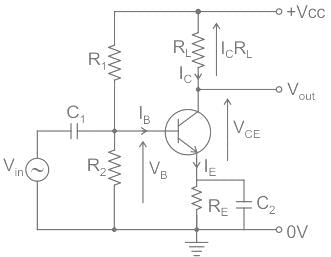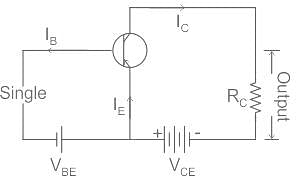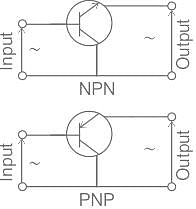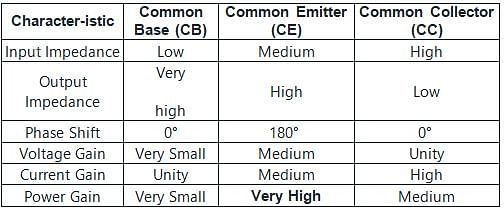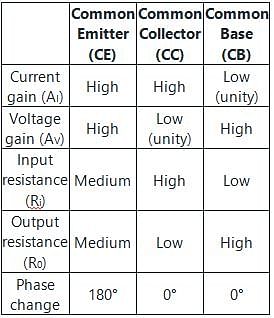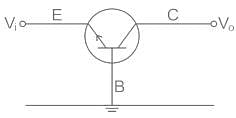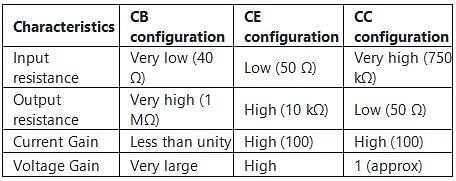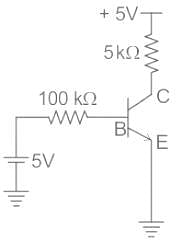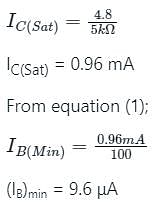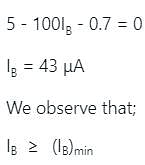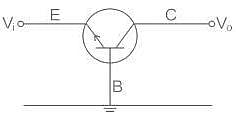Test: Configuration of BJT - Electronics and Communication Engineering (ECE) MCQ
10 Questions MCQ Test - Test: Configuration of BJT
In a common-emitter amplifier, the input AC signal to be amplified is applied across:
Which of the following is true for the common emitter configuration of BJT, with usual notations?
| 1 Crore+ students have signed up on EduRev. Have you? Download the App |
Identify the correct statement/s.
I. The other name for the common collector amplifier is emitter follower.
II. Power gain of the common emitter amplifier is high.
I. The other name for the common collector amplifier is emitter follower.
II. Power gain of the common emitter amplifier is high.
When the EB junction of a transistor is reverse biased then collector current
Which of the following BJT configuration has highest Power Gain?
Which of the following statement/s is /are correct regarding the CB Configuration amplifier?
A). Current gain of an ideal Common base amplifier is unity.
B). Voltage gain is unity.
C). The Phase between input and output is 180º.
For a transistor connected in common base connection, collector current is 0.95 mA and base current is 0.05 mA. Find the value of α :
In a Common Base Configuration, BJT has _______ input impedance and ________output impedance.
The transistor(β = 100) as shown in the circuit is operating in:
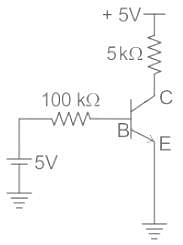
In CB configuration of transistor, the output impedance is:


